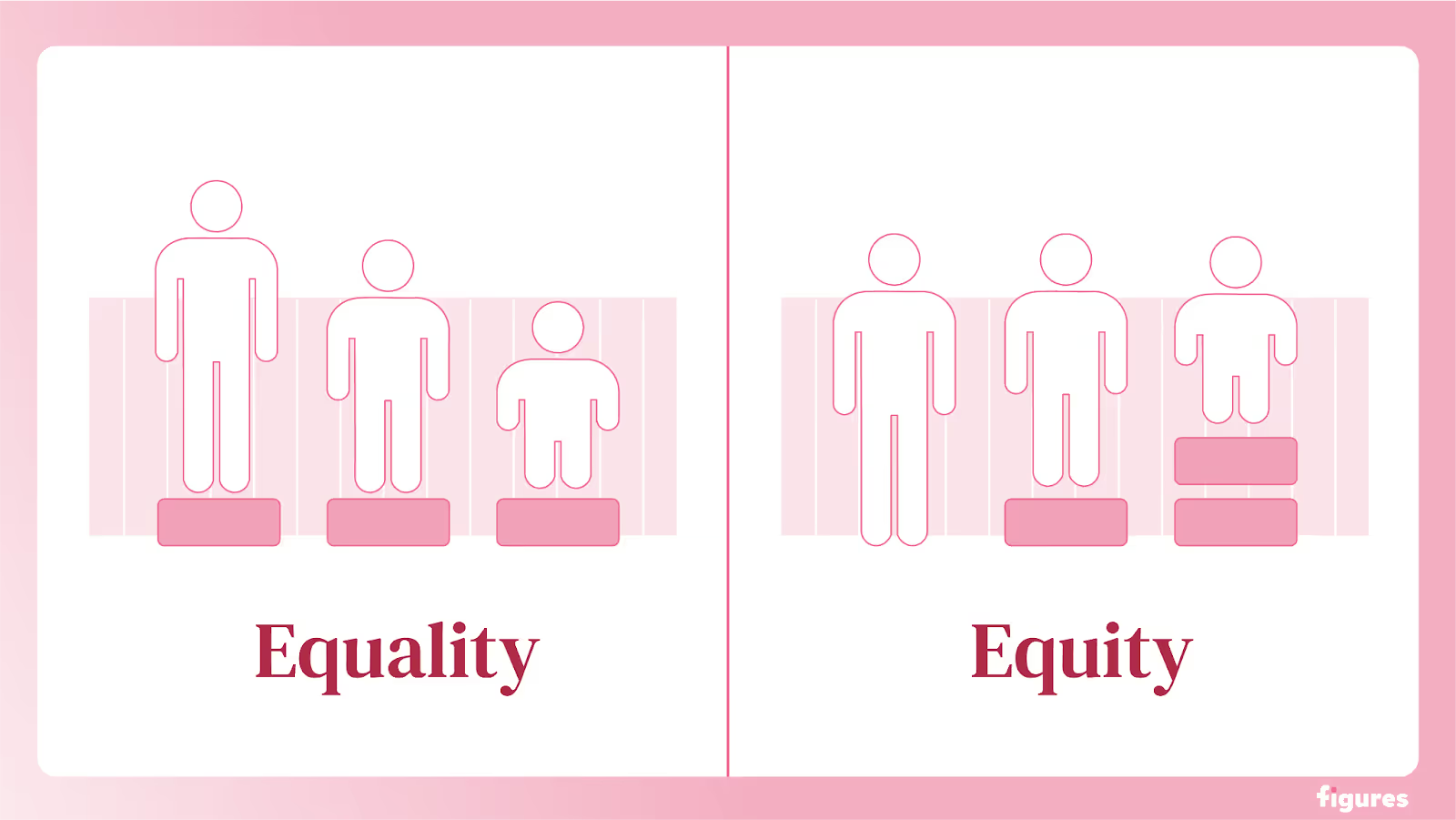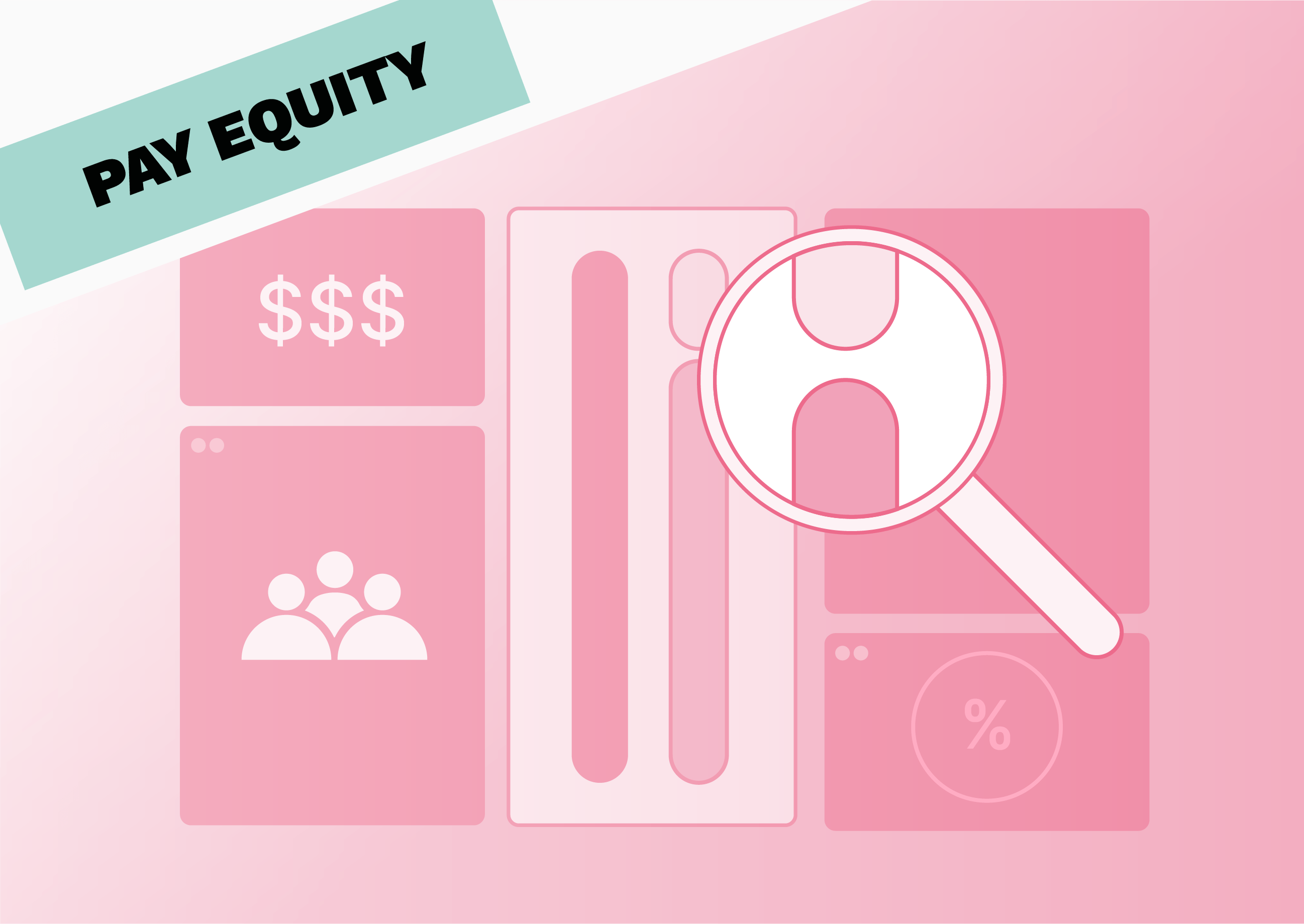Key points:
- Resource optimization beats perfect math: Companies achieving meaningful pay equity focus on strategic allocation of limited budgets. Using targeted adjustments to reduce gaps by 3-4% with €50,000 rather than waiting for the €350,000 needed for complete closure.
- Timing is everything: Integrating equity adjustments into regular merit cycles reduces questions and stigma while achieving the same outcomes. Employees see one 6% raise instead of separate performance and remediation increases.
- Prevention costs less than correction: Companies monitoring pay gaps monthly catch 2% drifts before they become 7% crises, while those checking annually spend more fixing accumulated disparities.
You’ve just gotten back from presenting your gender pay gap report. You found a 7% disparity that would cost €350,000 to fix completely. The good news is, the board is serious about closing the gap. The bad news? They’ve only offered €50,000 in remediation.
Before you start pulling your hair out in frustration, wondering how you’re going to sort this, just remember, perfect mathematical closure isn’t the only path to success.
Legal defensibility and measurable progress matter.
Fact is, while you should be aiming to close your gender pay gap, it’s not always possible to do it instantly. You need three specific allocation strategies with calculable trade-offs, concrete implementation timelines, and scripts that explain phased adjustments without breaking employee trust.
This guide delivers exactly that: resource optimization frameworks that work within your actual constraints, plus the systemic fixes and monitoring systems to ensure you never face this problem again. Because at the end of the day, €50,000 can still do a lot of good. You’ve just gotta be smart in how you use it. Let’s show you how.
What is pay gap remediation?
Pay gap remediation is a comprehensive process for correcting unfair compensation disparities within your organization. It goes far beyond simply giving a few people raises to tick a compliance box.
There’s a lot that goes into it:
- Root cause analysis: Understanding why gaps exist in the first place. Is it starting salary negotiations? Promotion velocity differences? Historical bias in job leveling? You can't fix what you don't understand.
- Strategic pay adjustments: Making targeted compensation changes based on data, not gut feeling. This means deciding who gets adjusted, by how much, and in what sequence to maximize impact within budget constraints.
- Operational repairs: Fixing the broken systems that created disparities. New hiring guidelines, promotion criteria, and salary band enforcement that prevent gaps from reopening next quarter.
- Continuous monitoring: Building infrastructure to catch disparities forming in real-time, not discovering them in next year's audit when they've already cost you talent.
Most companies get stuck between steps one and two. They know the problem but can't execute the solution. That's exactly what we're solving here.
Pay disparity vs. pay inequity: why the difference matters
Before you start going nuclear on every pay gap that exists in your organisation, let’s make a quick distinction first.
Pay disparity is any difference in compensation between employees or groups. Many disparities are completely legitimate:
- A senior developer with 10 years' experience earning more than a junior.
- Berlin-based employees earning more than those in smaller cities.
- Top performers receiving higher bonuses.
These differences reflect genuine value differences. Experience, location costs, and performance outcomes.
Pay inequity is the gap that needs your attention. This occurs when people performing work of equal value are paid differently based on protected characteristics like gender, race, or ethnicity… we shouldn’t need to say that these are not legitimate business factors.

This is generally what causes so much confusion amongst HR teams. Your analysis might show an 8% raw gender pay gap, but after controlling for experience, location, and performance, it drops to 2.7%.
Sounds good, right? Well, before you start pumping your fist in the air in celebration, that 2.7% is still legally and culturally significant. It represents unexplained – and likely discriminatory – differences that need remediation.
💡The EU Pay Transparency requires that anything above 5% triggers mandatory joint assessments. That 2.7% can quickly grow if left unchecked.
For deeper insight into these calculations, check out our guide on calculating the gender pay gap.
3 ways to make strategic pay adjustments
"Choosing a remediation strategy is a balance of impact, budget, and company culture. The goal isn't just to 'fix the number' for a report, but to demonstrate a genuine commitment to fairness. A targeted approach is often the most efficient starting point for growth-stage companies."
– Agnès Chauvigny, VP People at Figures
Words of wisdom, and we’re not just saying that because she’s a valued member of the team. The only thing is, it’s difficult to understand where to start, and because of this, many HR teams fall into the same common pitfalls. That means choosing strategies that look fair, but don’t solve the problem.
So, let’s look at three strategies. We’ll examine these as if you’ve got €50,000 to spend.
Strategy 1: class effect (the peanut butter spread)
What it is: Give everyone in the affected group the same percentage increase.
Your €50,000 gets you:
- 50 employees adjusted.
- Average raise: 1.2%.
- Gap reduction: 7% → 6.4%.
- Individual impact: €35-50 monthly increase.
Why it appeals to boards: Nobody's left out. Simple to communicate. No discrimination claims.
Unfortunately, there’s a pretty big problem with this. There will still be people within that affected group who are paid fairly and will receive the exact same raise as those at the lowest end of the spectrum.
Unfortunately, that €50,000 hasn’t really achieved much. Granted, this is kind of like trying to perform surgery with a shotgun rather than a scalpel. Not to worry, there’s a better way.
Strategy 2: class and individual focused (the surgical strike)
This is where strategic thinking pays off.
💡 Quick reality check: This strategy often delivers the best legal protection, as you're fixing the most defensible cases of underpayment first.
Plus, you’re dropping that gap by a whole 3% almost, because you were smart about where you spent it. And if you manage to get to 4.2%, then you’re actually under the 5% threshold allowed by the EU pay transparency directive. You’ve still got some work to do, after all, any gap is a bad one, but you’re at least compliant.
The board members will be bowing at your feet.
Strategy 3: class and individual broad (the democracy trap)
We like to do things differently here at Figures, so we left the worst till last.
This strategy is like a honeytrap, because on the face of it, it looks fair. Help anyone below their predicted pay, regardless of demographic. Sounds awesome, right? Well…
Here's what €50,000 actually buys:
⚠️ Warning: You'll cover only 40% of the needed adjustments, leaving 120+ employees still underpaid
- Adjustments: 80 employees.
- Average raise: 4.8%.
- Budget exhausted before reaching the affected demographics.
- The gap might actually increase to 7.3%.
Why this backfires: If the majority-group members are already clustered near market rates, you spend precious budget on small adjustments while leaving larger disparities untouched.
Strategy 1 was a shotgun; this is like 2 kilograms of dynamite. Your intentions were pure, but you actually made things worse, and now you’ll have even bigger questions to answer from the board.
How to budget for fairness when resources are tight
Pay gap remediation requires three decisions: who gets adjusted, how much they receive, and when it happens.
Most HR leaders don't have unlimited budgets for remediation. That doesn’t mean you can just curl into a ball and give up… though we know how tempting that option is at times.
You just need to know how to spend your budget smartly. That means if you’ve got €50,000, you’ll want to calculate exactly how many adjustments you can make at different percentage levels. This clarity helps you communicate realistic expectations to stakeholders.
Prioritise the biggest outliers
Focus first on employees whose pay falls significantly below the predicted salary. Anyone more than 1.5 standard deviations from the mean. These cases are:
- Most legally defensible to fix.
- Most likely to cause retention issues.
- Most visible to other employees.
From here, you can also allocate budget to departments or job families where systemic gaps are most pronounced. If engineering shows a 9% gap while marketing sits at 2%, your euros work harder fixing engineering first.
“Work from the outside in. Take care of those with the biggest disparities first, which will help you shrink your gap even with limited resources.”
– Mégane Gateau, VP Marketing at Figures
Utilise a differential merit pool
Here's the clever approach most miss: redistribute your existing merit budget.
Example: A Berlin tech business with a standard 3% merit pool restructured it:
- Underrepresented groups: 3.5% increase.
- Majority groups: 2.5% increase.
- Same total budget, faster gap closure.
This strategy closes gaps 40% faster than uniform increases while maintaining budget neutrality.
Fixing the systems that create pay gaps
Pay adjustments are just expensive band-aids. Without fixing the processes that create inequities, you'll be running remediation exercises forever.
Here's how to stop gaps at the source:
- Standardise your job architecture: Defined levels, consistent titles, and measurable progression criteria. No more mystery promotions or surprise salary disparities.
- Refine your job descriptions: Remove subjective language that invites bias. Focus on objective skills and measurable responsibilities, not personality traits.
- Establish objective pay guidelines: Use data to build clear salary bands for every role. When new hire offers and promotion raises follow predetermined ranges, manager bias can't creep in.
- Train managers on compensation: Your managers make daily decisions impacting pay equity, often without realizing it. Equip them with unconscious bias and compensation training, allowing them to create fair and effective salary bands.
"If, during hiring, we leave too much room for negotiation, we recreate gaps. An equity audit is useless if we continue to create inequalities at the outset."
– Virgile Raingeard, CEO at Figures (speaking to culture-rh.com)
Managing difficult conversations around pay gaps
Now, you may have been managing your pay gap as best you could with your budget, but some employees will still fall outside of pay benchmarks. That means disgruntled employees, who will want to talk. Uh-oh.
Don’t panic. There’s a way to handle these conversations professionally. Both for managers and employees:
Employee script for raising concerns:
"I've learned my compensation may not align with team benchmarks. Could we schedule time to review my position against current market rates and internal equity guidelines?"
Manager response that acknowledges without admitting liability:
"We're reviewing compensation alignment across all teams. Your input on role scope and performance factors will help ensure fair outcomes."
Notice that point about acknowledging without admitting? That’s because you should never admit to discriminatory pay practices. Frame adjustments as "market alignment" or "role reassessment," not "fixing discrimination." This protects the company while still addressing legitimate concerns.
Do keep in mind, while we advise that you don’t admit liability, we don’t condone your pay gaps. It’s still an issue you need to address, all be it one that’s much easier to reduce when you’re not backpaying multiple employees who know they’ve been discriminated against.
We want your company to be paying everyone fairly in the long run, not just the employees who were savvy enough to kick up a fuss.
Staying ahead: Why continuous monitoring is no longer optional
Your annual pay equity report is just a snapshot… one that’s outdated the moment it's printed. One aggressive hiring round or promotion cycle creates fresh inequities overnight, and you won't know until next year's analysis.
This is why you need to monitor your pay gaps over the year. Especially when we consider the new EU directive.
Under the new EU directive, companies with reported average pay gaps of 5% or more will be required to conduct a joint pay assessment with employee representatives.
The numbers tell a sobering story:
- The Office for National Statistics found that the pay gap has fallen by approximately a quarter in the last decade.
- Yet Eurostat data shows the unadjusted gender pay gap in the EU remains at 12.0%.
What’s more alarming is that, based on Figures' data, 82% of companies joining our platform have pay gaps that would trigger this requirement under the 2026 regulations.
This changes everything. "Statistically insignificant" no longer matters. You need to stay below that hard 5% threshold, making real-time monitoring not just helpful – but mandatory for compliance.
How to move from annual reports to real-time remediation
This is where Figures transforms from nice-to-have into business-critical infrastructure.
Instead of scrambling with spreadsheets once a year, you maintain continuous oversight. The Figures Pay Equity dashboard integrates directly with your HRIS for a live, data-backed view of your compensation landscape.
“What matters is the quality of the data," notes Virgile Raingeard. Annual snapshots often rely on outdated or incomplete information. Real-time HRIS integration ensures your remediation decisions are based on current, accurate compensation data – not last quarter's spreadsheet.
What real-time monitoring delivers:
- Pinpoint gaps instantly: Our dashboard provides visual breakdowns of disparities across your workforce, showing exactly where inequities hide.
- Drill down to individuals: Move from a high-level departmental view to individual employee situations in two clicks. Understand specific gaps and their root causes.
- Get actionable recommendations: The platform doesn't just flag problems – it provides specific remediation suggestions, helping you allocate budget where it matters most.
- Stay ahead of the 5% threshold: Continuous monitoring means catching a 3% drift before it becomes a 6% compliance crisis. Set alerts at 4% and fix issues while they're still manageable.
The difference between companies that maintain equity and those scrambling to fix it? The ones succeeding check their dashboards weekly, not annually.
The business case for getting this right
Ignoring pay gaps isn't just unfair. It's expensive. Here's what's at stake:
The real cost of inaction:
- Talent attraction: 75% of job seekers are more likely to apply when salary ranges are transparent. Your pay gaps are visible whether you acknowledge them or not.
- Retention and productivity: Employees who discover pay inequities are more likely to job search. Fairness directly fuels engagement and performance.
- Brand reputation: Pay inequity scandals destroy customer trust and employer brand overnight. Recovery takes years.
- Legal compliance: The EU Directive brings fines, mandatory audits, and public reporting requirements. Non-compliance costs more than remediation.
"The debate around compensation has moved from 'if' we should be transparent to 'how' we do it effectively. Secrecy is no longer a viable strategy. Companies that win the best talent will be those who use data to prove their commitment to fairness."
– Virgile Raingeard, CEO at Figures
As you can see, it’s not just talent at stake. It’s your business, especially when we account for legal costs and brand damage of large pay gaps.
From pay gap remediation to optimisation
Effective pay gap remediation is an ongoing cycle, not a one-time project. It requires strategic pay adjustments, fixing broken operational processes, and continuous monitoring.
By shifting from reactive compliance to proactive optimisation, you're helping to build a more equitable, attractive, and high-performing organisation.
And monitoring and calculating these gaps doesn’t need to be difficult, especially with compensation software like Figures helping you out behind the scenes. Our comp dashboards are updated constantly, using data from your own HRIS, ensuring you can maintain compliant gap levels through continuous monitoring.
See how Figures turns overwhelming data into clear remediation paths by booking a free demo.
Summarize this article with AI
No time to read it all? Get a clear, structured, and actionable summary in one click.






